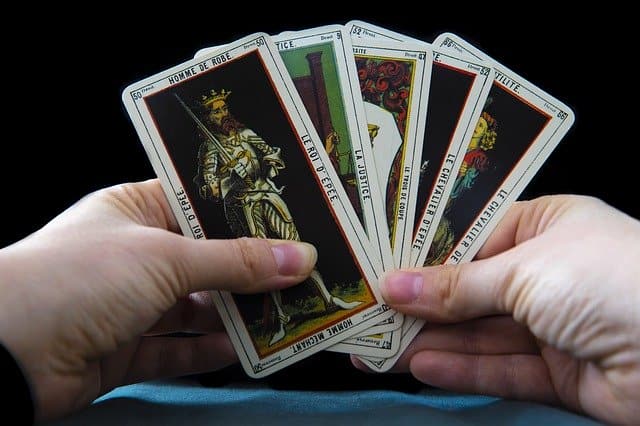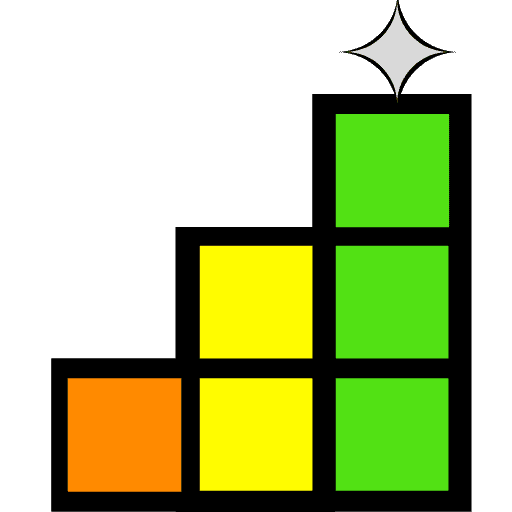Tarot cards in D&D are really cool tools to use. Who wouldn’t like the idea of using obscure and almost mystical cards to enhance their fantasy setting? Using them beyond just a gimmick is hard for most DMs out there though.
Tarot cards in D&D have a variety of uses. They can be used for roleplay, story planning, character customization, or more.
We will go over what Tarot cards are later on and how to make them yourself with some help, but this article will primarily focus on how you can make these cards into something beneficial to your D&D games.
Using Tarot cards in D&D
As stated, we will go over what Tarot cards are later but for now we will assume that you have a general idea of what they are.
Tarot cards in D&D can have more uses than they would in real life. In real life they were used to divine futures like horoscopes for people today, but you can use them as an important item in D&D.
We today have science to help us understand how things work. We logically know that Tarot cards are not a good source to base our futures on, but we still sometimes do it. What would happen if there was no logic telling us it was impossible, but instead magic, items, and other divinations that work? We might believe Tarot cards and they might hold more weight. They might even be correct.
The beauty of Tarot cards in D&D is that they can become more than they are today. Tarot cards can be blessed by gods, magic items, or enhanced with arcane techniques. The best part is that they are vague and easy to manipulate if the all-knowing DM was in charge of the readings.
While we know that Tarot cards are not a good basis to make decisions on in real life, in D&D that changes. Characters might believe in the cards or the players might just start believing in the cards.
There might also be cultures around Tarot card readings that revere the reader. If the profession is respected then people may have to pay a lot just to get their cards read by a professional.
These are just general ways to help you enhance your game and spice things up, but how can they be useful to players?
Tarot cards in D&D for players

For players, your character needs a hobby right? Passing the time with dice is boring and conning people with a fake coin or whatever is basic. Why not get creative and use Tarot cards?
Using Tarot cards will give your character a burst of personality and always give you an interesting way to start up a conversation. You might even use this little hobby to get into the good graces of a noble and start to rise in the ranks of politics. If you start to get involved in politics, read our article to help you on it.
Tarot cards will also give you a divination that might actually work. You can talk to your DM and ask if the cards are more or less helpful than they are in our world. Even if they are just as helpful in D&D as they are here, you might be able to use them for more roleplay. Why not beseech the god of luck?
Tarot cards, if used enough and with enough faith could be a holy symbol for a cleric to the god of luck or even get people to believe in your god. It doesn’t have to be luck. It could be that your god is a god of fate and you want to spread the word. Tarot cards are a great way to do this.
You can also use Tarot cards for someone who is indecisive. If they have a flaw or quirk Tarot cards can further that flaw and make you get an even more interesting character.
There are more ideas that you can come up with, but I hope that this has started to let flow a river of possibilities. Now, we need to help our DMs a little bit more.
Tarot cards in D&D for DMs
You don’t need to come up with a huge change in how Tarot cards work. Tarot cards in D&D can function just like the ones in real life and they will still be useful to you. Primarily, there are 2 main ways that Tarot cards can be of use.
- Quest hooks
- Personal brainstorming
If the players see a lady giving out readings for cheap they might decide to take a reading. It is fun and a unique way to get the players to do something. The beauty of these readings are that most of the time they are ambivalent since they can’t know the future. You know the future though.
Since you know the future as a DM you can warp the results. Put in little hints and clues for the players to follow in order to get a quest hook. Here is a good example.
You want to get the players to investigate the graveyard. Normally death or something would be a good draw. Instead, the player draws fate. You can tell the player that their fate is full of death and hardship ahead of them. They should reflect on those who were rash and suffered a cruel fate so that they don’t suffer the same ending.
This example tells them to go to the graveyard or ask around about how to not meet a terrible end. If the players act, then they will have new respect for this plot hook dispenser and will follow the quest hook. If not, then in the future the players might ask the fortune teller for help since they are stuck.
For yourself, if you are ever stuck you can use Tarot cards to help with those creative juices. We have a whole article on session prep, but if that doesn’t help you then giving yourself a reading for your plot might. These cards are helping you make the future, not predict it so you don’t have to believe in them or have any supernatural beliefs to do so. Here is an example:
You are stuck and turn to the cards. After believing in the cards you pull out “The Wheel” and “The World” both upright. Your players have been playing for a while and have finally received recognition (The World). Something is going to interfere with that as an unexpected event happens (The Wheel). You already have the start of the next part in your campaign.
You can continue to draw and gain more insight or just make up a story from there. Similarly, you can veto the cards to make something better happen, but I would suggest to work with the first drawing. It will make you feel more inclined to use these cards and try to work with what was given instead of re-draw until you feel that it is hopeless.
But how did I know what “The Wheel” and “The World” were?
Understanding Tarot cards

There are a bunch of sites dedicated to explaining what Tarot cards do, their history, and more. We are primarily focused on how you can use Tarot cards in D&D so we didn’t go into all of that. If you want to get into all the details with a portable chart etc for you, our affiliate has a very useful tool with everything you need on how to run Tarot cards. But if you just want some basic information, here it is.
There are 78 Tarot cards. Major Arcana and Minor Arcana.
The 22 Major Arcana are completely unique while the 56 Minor Arcana are divided into 4 suites like cards ranging from ace-king. These suits are wand, sword, cups, and pentacles.
The spread of the cards are also important. Different spreads mean different things, and if you are just pulling cards 1 at a time as we did earlier for fun the meanings differ based on if the card is pulled upright or reverse.
Those are the basics, and to get any further into detail is too much. Just look at our affiliate’s work that simplifies it or take your time to figure out the basics from other sites. There are many out there to choose from.
Conclusion
Tarot cards in D&D can be used for a surprising amount of things. Their uses are not just relegated to fortune teller readings that are at best questionable. You are the one in charge of the readings if as the DM you are giving them out. You know the future, so make the Tarot cards a plot point or hint if you wish.
Tarot cards can help DMs brainstorm a session if they are stuck, but they can also help players. It can add some flair to your character or even give you an in for quests. You can become famous, always have something to talk about, and have an interesting quirk if you want to go more in-depth with your Tarot card obsession.
With all these tips, I hope that I have helped you enhance your D&D game with the use of Tarot cards.
This has been Wizo and keep rolling!




